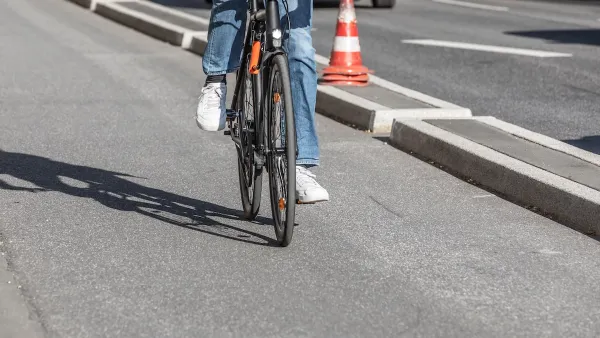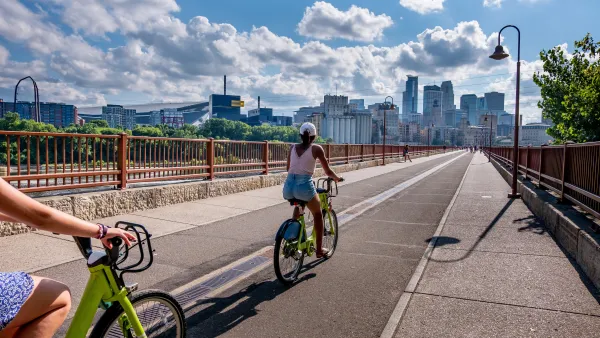In the final installment of his series on "Walking in America" on Slate, Tom Vanderbilt looks at why so much of the built environment is hostile to pedestrians, and how planning can change that.
It's not just enough to encourage people to walk: as Tom Vanderbilt shows, decades of planning for high-speed automobility have made walking almost impossible in some parts of metropolitan areas.
"A large part of the problem is that places...were built on the idea that there wouldn't be anyone walking on them. Indeed, there wouldn't be much of anything happening on them, except for cars speeding uninterruptedly from one dense town to another. This was the vision articulated by early optimists like Benton MacKaye and Lewis Mumford, who sounded their call for such roads in a 1931 Harper's article called 'Townless Highways for the Motorist.' Not only should highways avoid the centers of towns, they argued-in order to keep long-distance traffic from congesting already-busy urban thoroughfares- but those highways should themselves be free of commercial development.
[But] the high-speed suburban arterial became a kind of American Main Street...What's more, these arterials were typically built without any provisions for people walking-because who would be? [Pedestrians] are as invisible to society as they are to the average driver. This failure to plan for anyone on foot is just one of a number of shortcomings of our overbuilt, undermaintained road network that are coming into relief."
Instead of laying streets and planning for sidewalks later -- as has been the practice in many developments - Vanderbilt shows how more than 300 municipalities are now planning for "complete streets" that facilitate multiple modes including walking.
FULL STORY: Learning To Walk

Analysis: Cybertruck Fatality Rate Far Exceeds That of Ford Pinto
The Tesla Cybertruck was recalled seven times last year.

National Parks Layoffs Will Cause Communities to Lose Billions
Thousands of essential park workers were laid off this week, just before the busy spring break season.

Retro-silient?: America’s First “Eco-burb,” The Woodlands Turns 50
A master-planned community north of Houston offers lessons on green infrastructure and resilient design, but falls short of its founder’s lofty affordability and walkability goals.

Test News Post 1
This is a summary

Analysis: Cybertruck Fatality Rate Far Exceeds That of Ford Pinto
The Tesla Cybertruck was recalled seven times last year.

Test News Headline 46
Test for the image on the front page.
Urban Design for Planners 1: Software Tools
This six-course series explores essential urban design concepts using open source software and equips planners with the tools they need to participate fully in the urban design process.
Planning for Universal Design
Learn the tools for implementing Universal Design in planning regulations.
EMC Planning Group, Inc.
Planetizen
Planetizen
Mpact (formerly Rail~Volution)
Great Falls Development Authority, Inc.
HUDs Office of Policy Development and Research
NYU Wagner Graduate School of Public Service




























